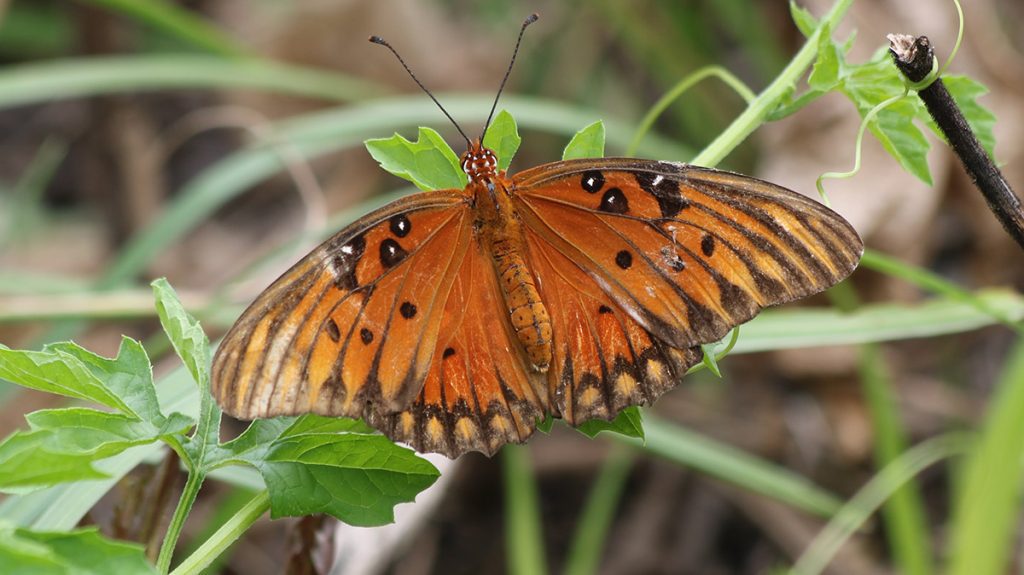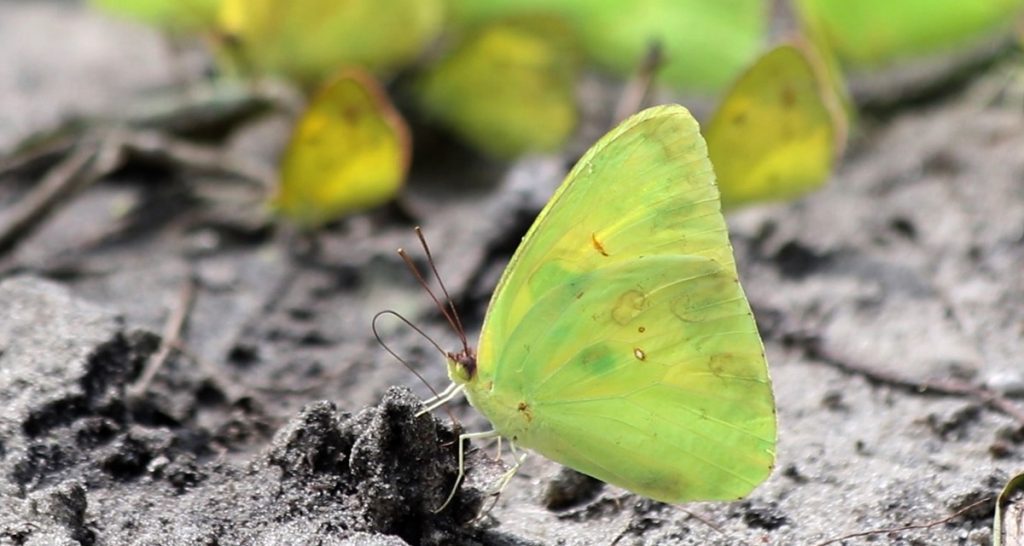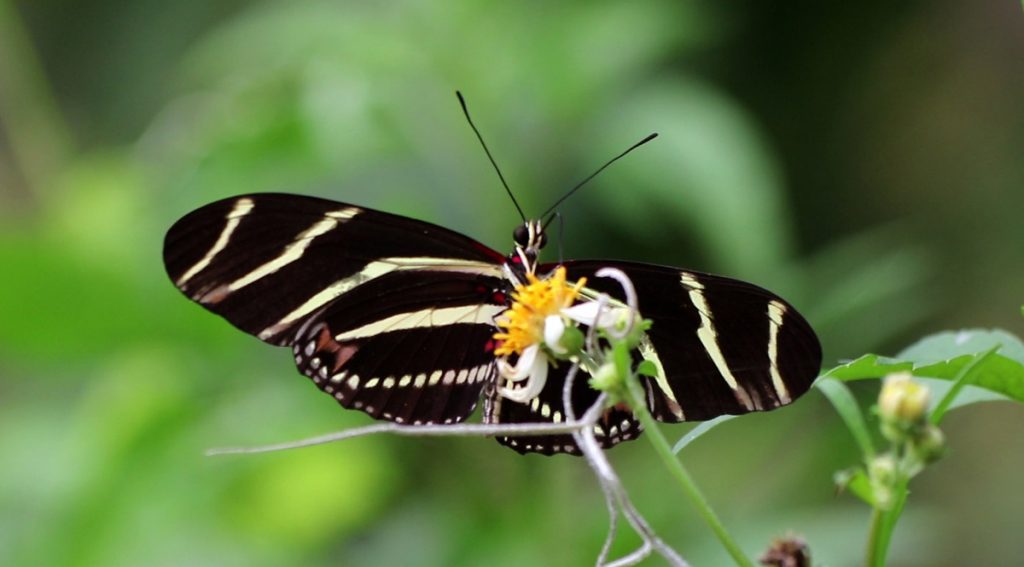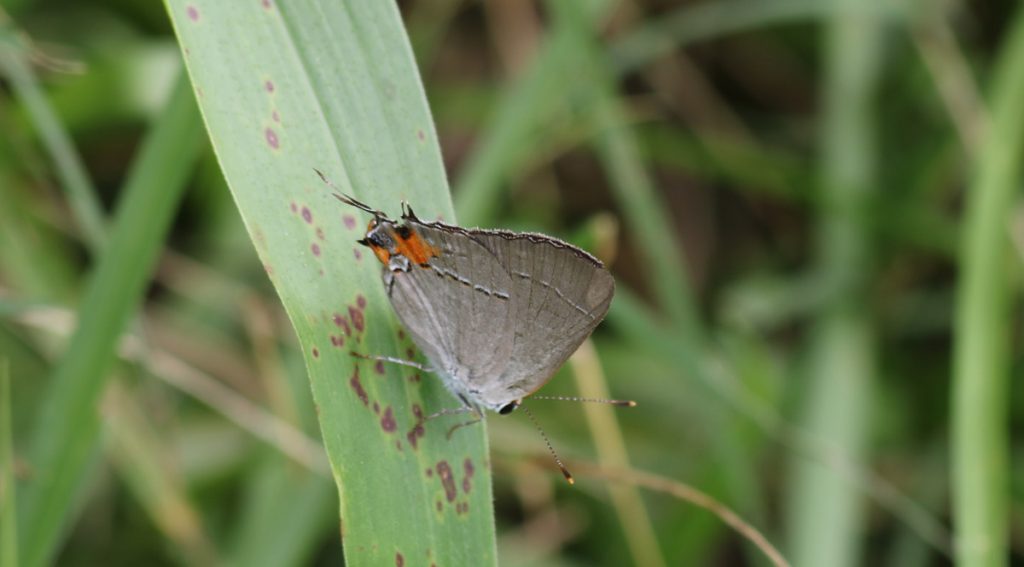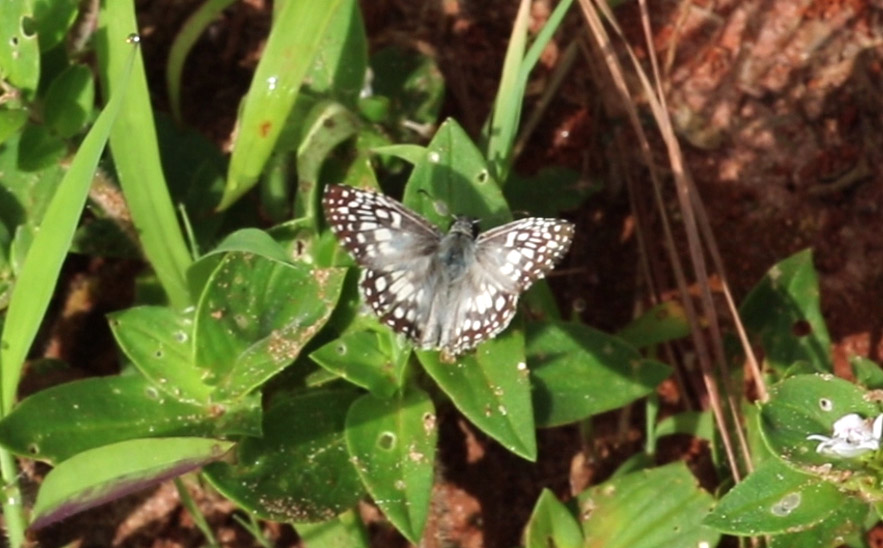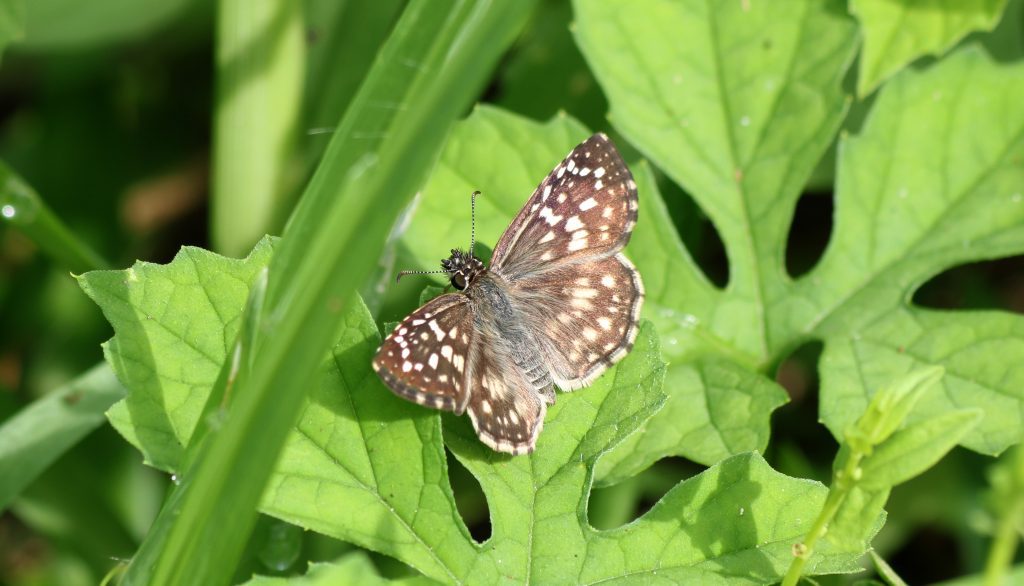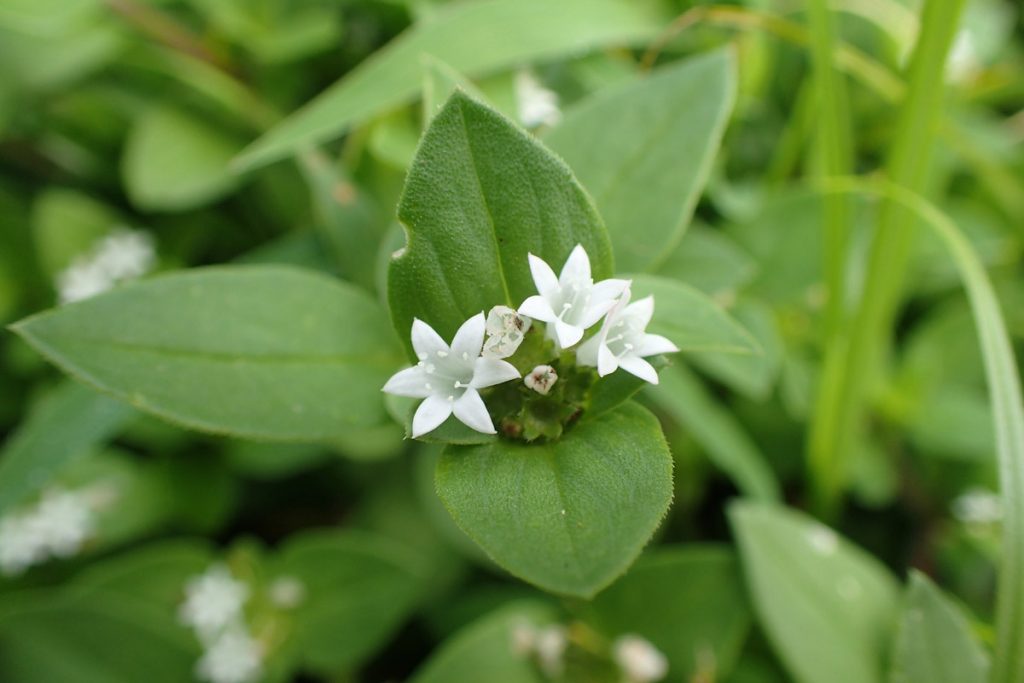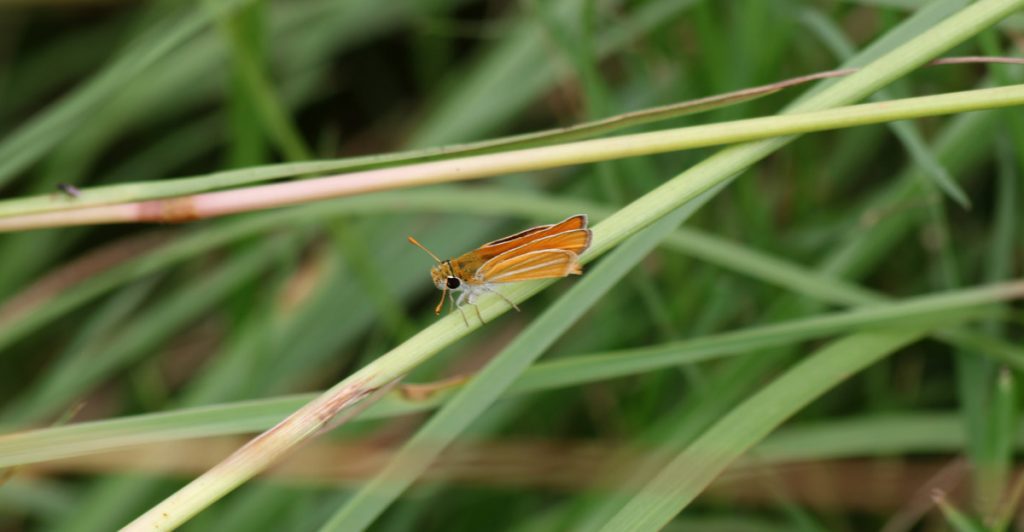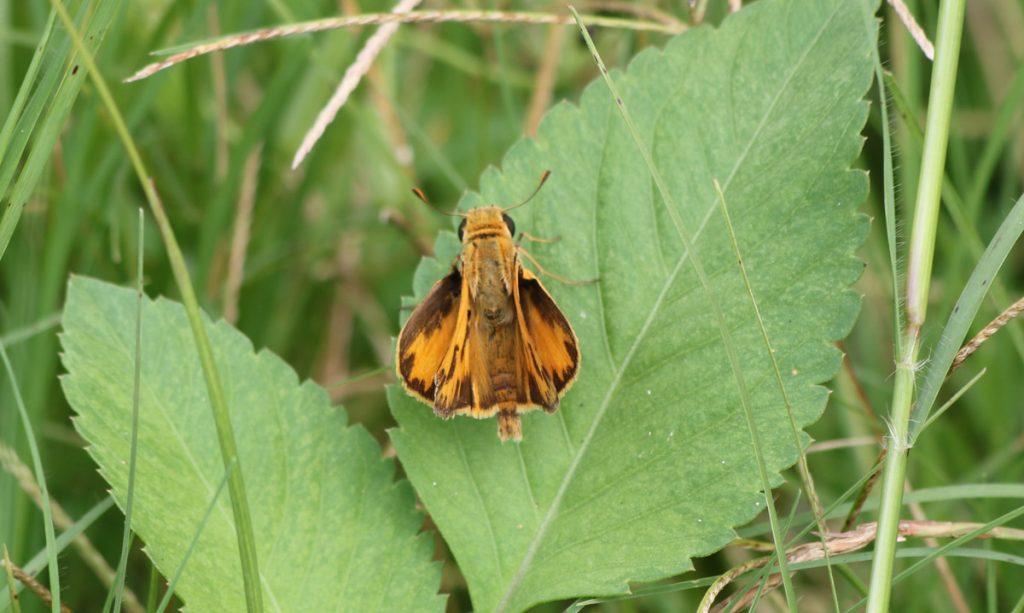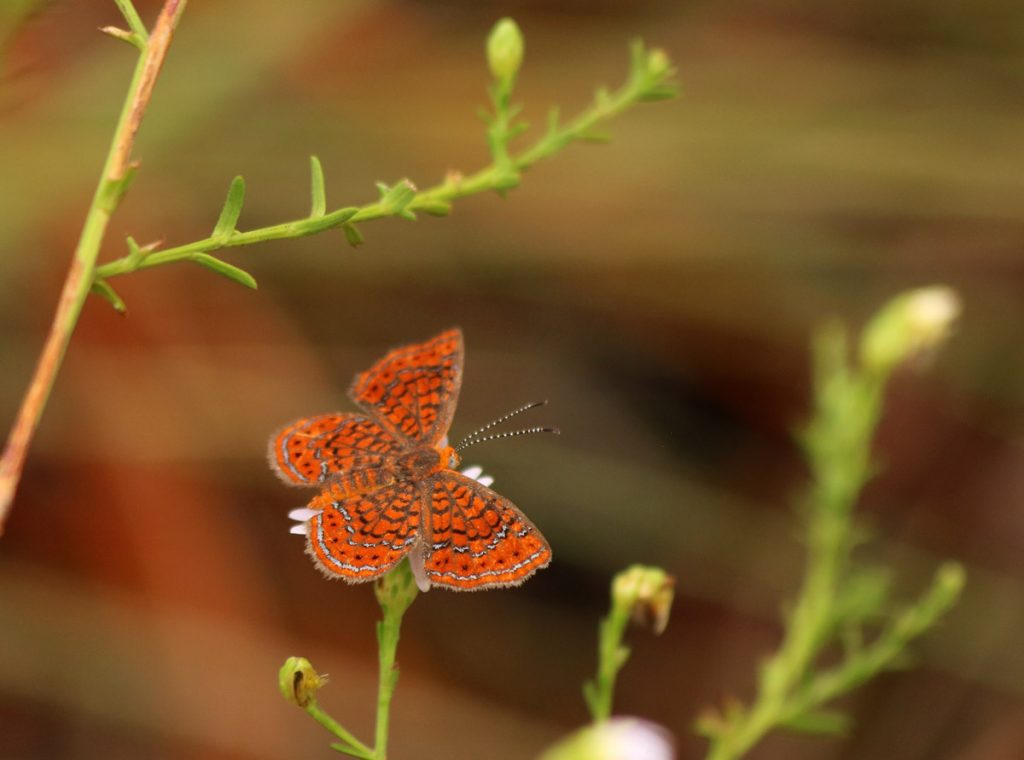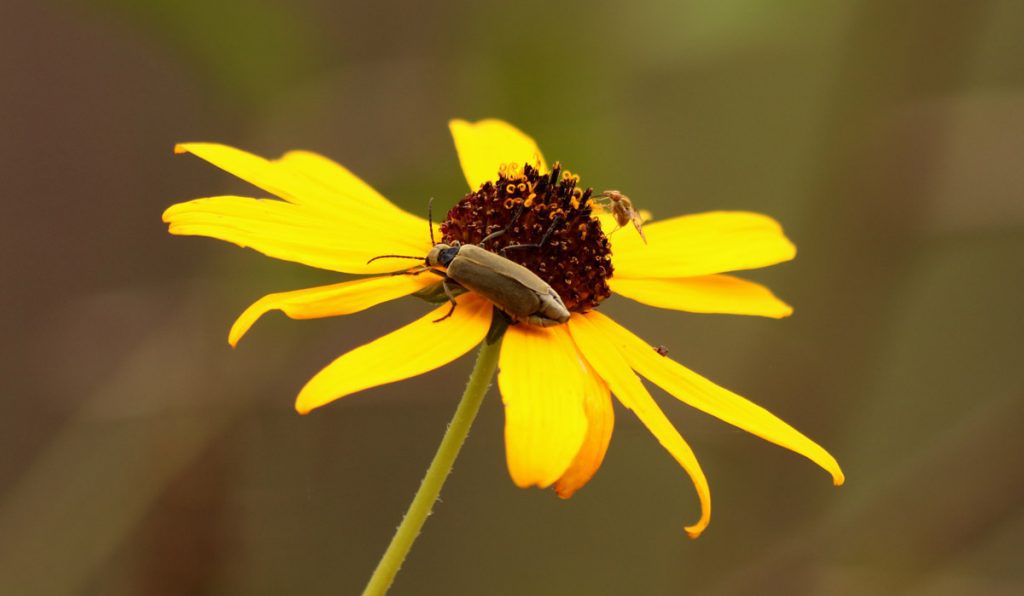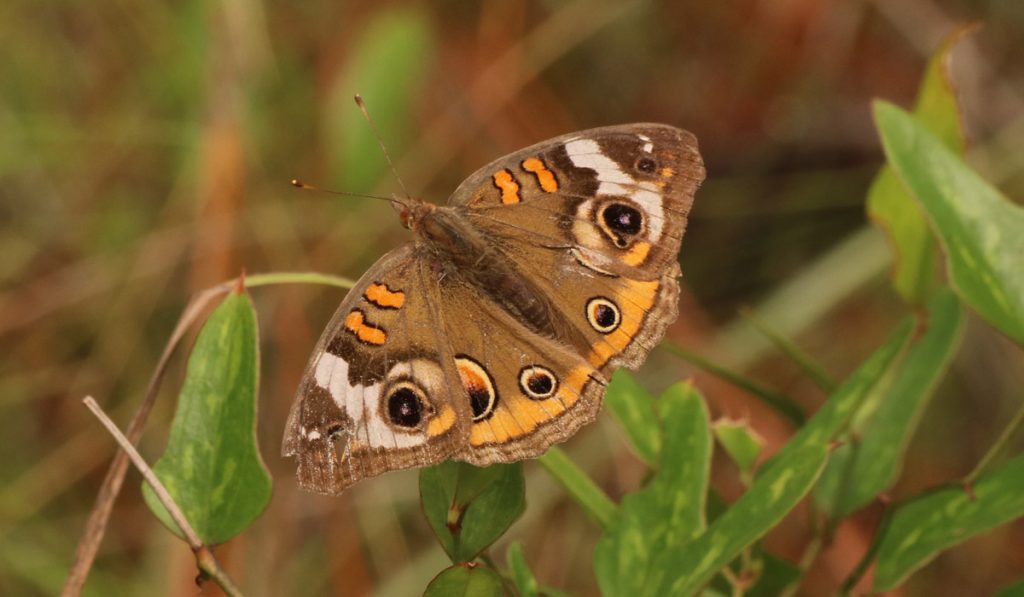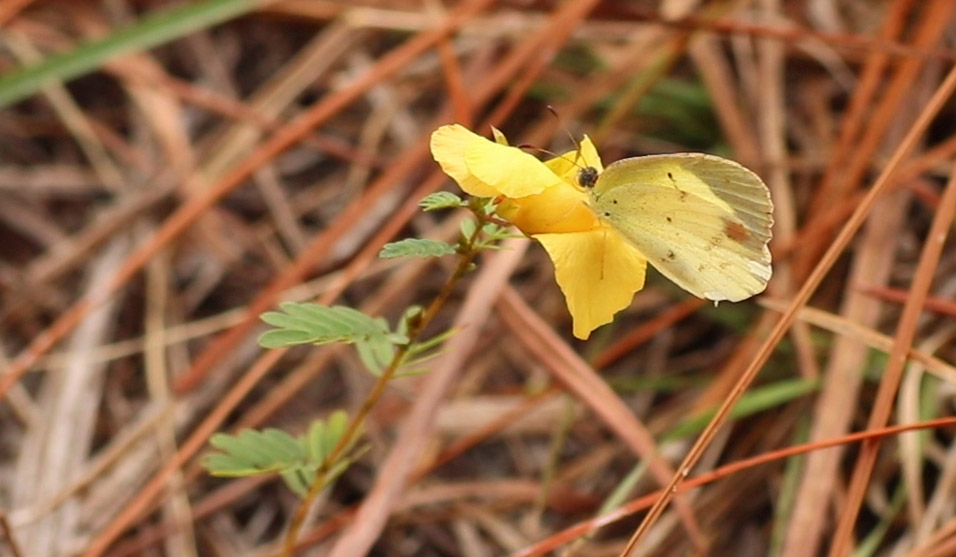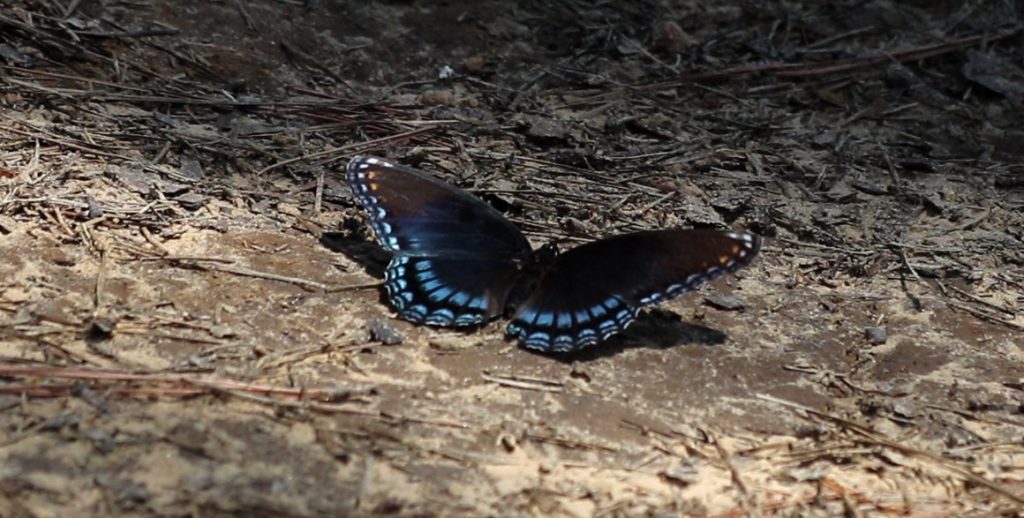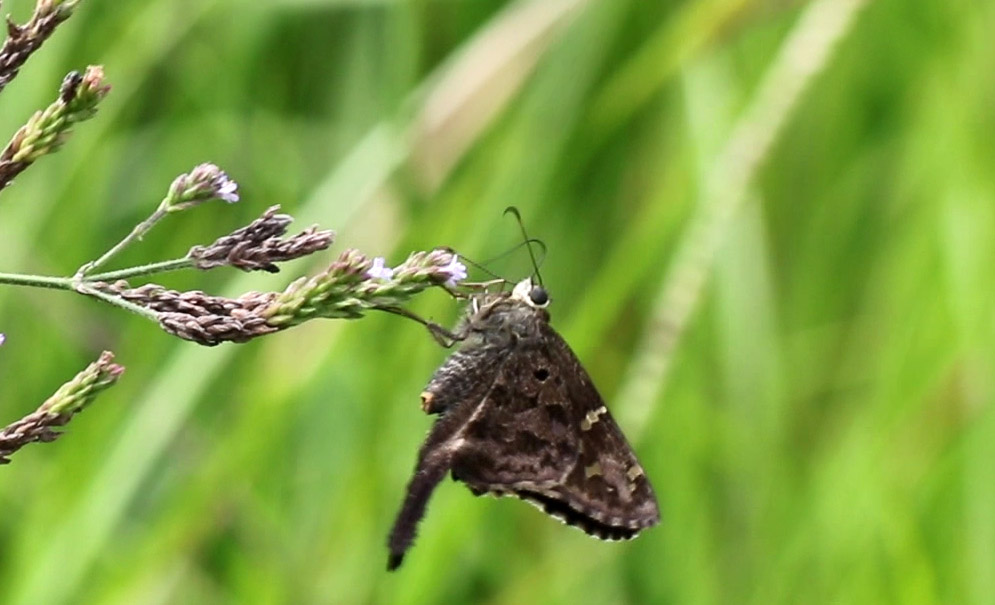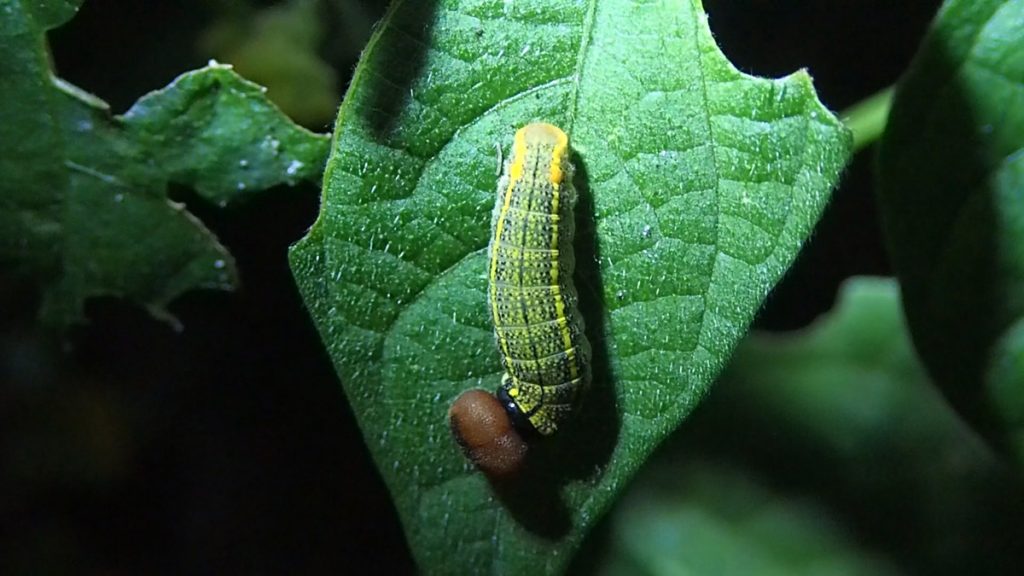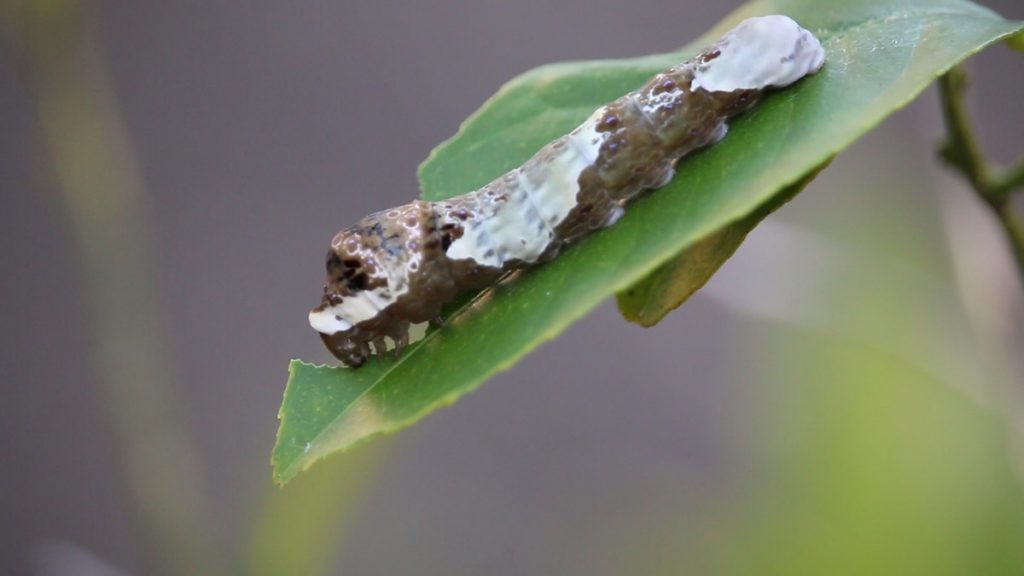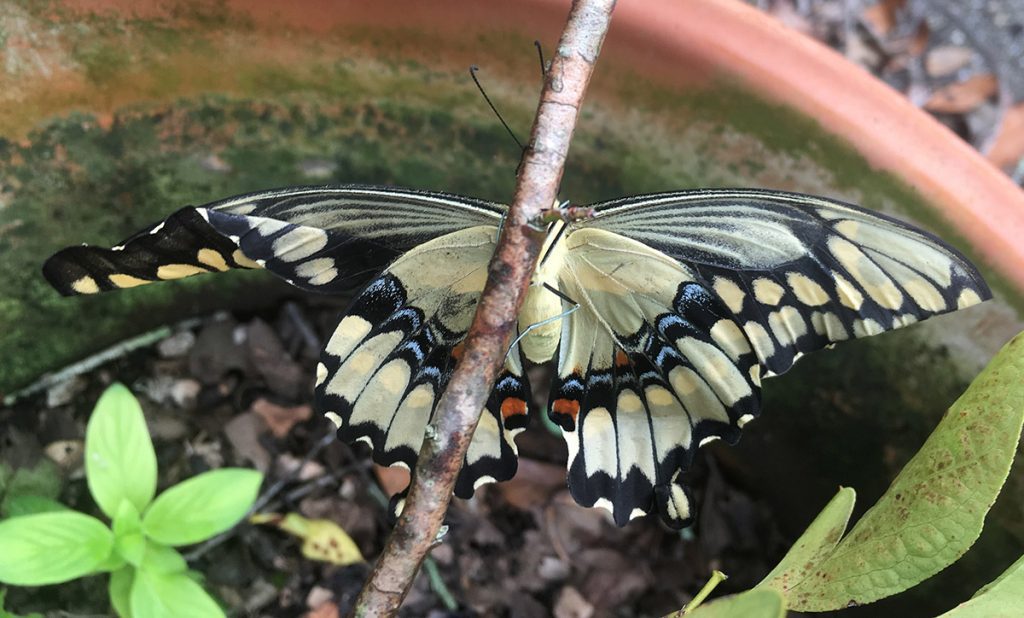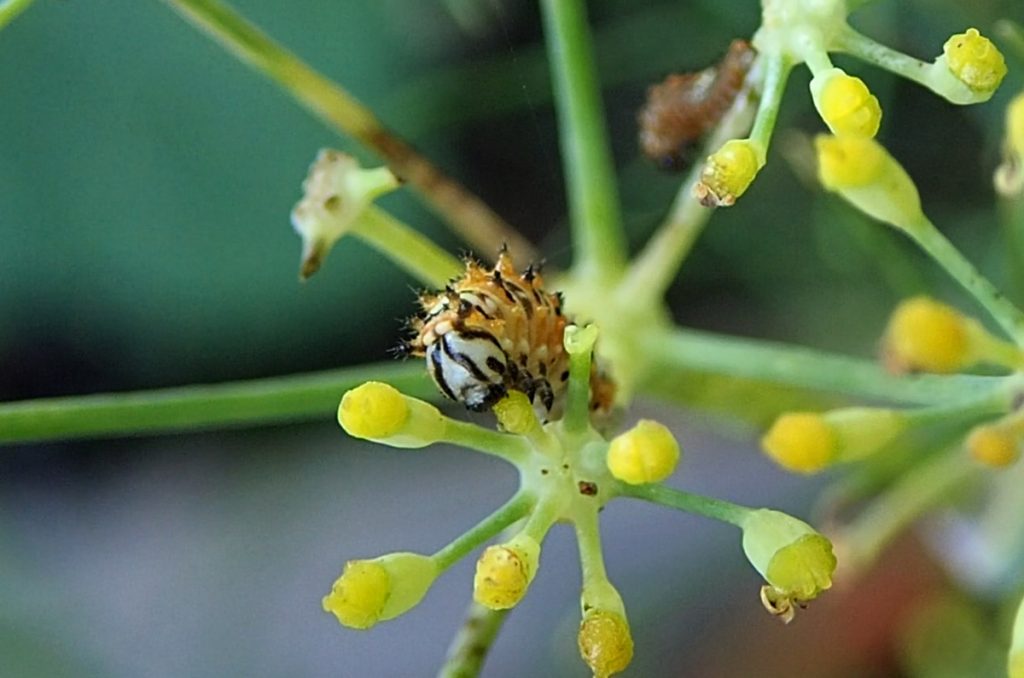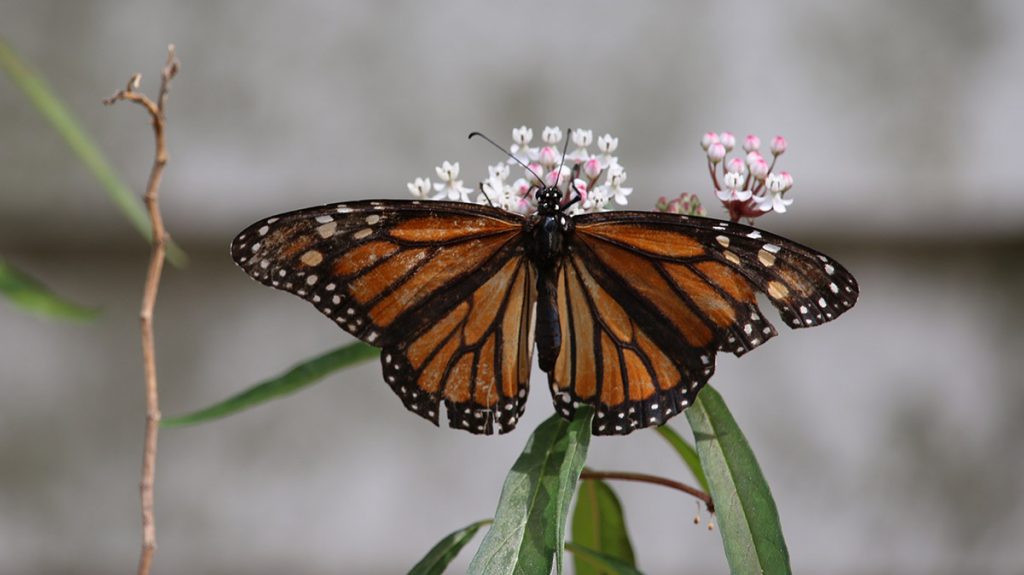Butterflies are all around us, and they deserve a closer look. When you pay attention to butterflies, you notice the plants they use, and other interesting insects.
Rob Diaz de Villegas WFSU Public Media
Some of my favorite butterfly shots in this video came from an unrelated shoot. We were at Tall Timbers Research Station and Land Conservancy on the day of the eclipse. Did red cockaded woodpeckers get fooled into acting like it was sunset? No, it never got that dark in Tallahassee. But, on the way out, we found our way blocked by the hundred-plus butterflies you see in the opening shots.
Dr. Todd Engstrom, who had invited us that day, said that there must have been abundant minerals in the soil. It’s a behavior Dave McElveen told me about a month earlier. He was looking for butterflies along the water’s edge at Lake Munson.
“The males of several species come and suck up the minerals in the wet, damp sand,” McElveen said, “and they pass it to the female with the sperm… to help raise the eggs”
At the end of July, we tagged along with McElveen and other citizen scientists as they counted butterflies at several Tallahassee locations. And most of the footage in the video comes from that day. But there’s only so much you can see in one day, especially if you’re trying to visit more than one location.
I visited one of their sites on another day, and added shots from a couple of other locations. What you’ll see is a thumbnail sketch of Tallahassee butterflies from various habitats around town. In this post, I’ll list the species you’ll see in the video, the habitat, time of year (from late July through early October), and flowers if I can ID them. I’ll pair this information with the time in the video where you’ll see them.
These animals are all around us. And here’s a chance to take a closer look in the places we’re most likely to see them- parks, forest trails, and even our own backyards.
But first, a little about the search.
The North American Butterfly Count
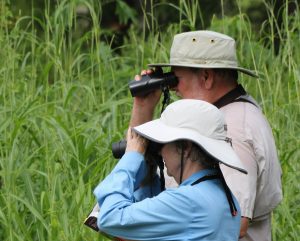 Over the summer, North American Butterfly Association (NABA) chapters across the continent spend a day counting each species of butterfly. In north Florida, we have the Hairstreak Chapter. They split up into four teams and disperse within a fifteen mile search circle. Each team heads to a compass position- north, south, east, and west.
Over the summer, North American Butterfly Association (NABA) chapters across the continent spend a day counting each species of butterfly. In north Florida, we have the Hairstreak Chapter. They split up into four teams and disperse within a fifteen mile search circle. Each team heads to a compass position- north, south, east, and west.
They end up sampling a variety of habitats, from city park, floodplain forest, pine flat woods, and along lakes and rivers. Each habitat has different plant life, which are nectar and larval food sources for butterflies. Some areas are more open, and others denser, and there’s a mix of wet and dry places as well.
“As we collect data, over the years, for the same areas,” says Dean Jue, president of the Hairstreak Chapter, “you can track population trends of butterflies.” In this way, they can chart declines in certain species and increases in others.
For instance, counters found an increase in a species visiting from south Florida this year- we’ll have more on that in a bit. Other numbers could be affected by factors such as the weather that day. After all, this is just one day in one year, and so the most useful information is revealed when looking at the the big picture.
The Hairstreak Chapter offers field trips around our area, from the Apalachicola National Forest, state parks, The Grove, and more. The field trips occur regularly between March and November, when butterflies are active. You can get information about the trips on the Hairstreak Chapter website.
Butterfly Gathering at Tall Timbers
Tall Timbers lies north of Elinor Klapp-Phipps Park, where the North Side Team counted.
Tall Timbers’ 4,000 acre property is largely restored pine flat wood ecosystem, crisscrossed by dirt and clay roads. In late summer, a fair amount of wildflowers were blooming.
00:03 Here we see several species of butterfly on a dirt road. I’ve noticed this kind of thing on red clay roads in north Leon and Jefferson counties, especially with yellow sulphur butterflies. In this first shot, we see gulf fritillary (the orange ones), sleepy orange (yellowish orange wings with black edges), little yellow (small and yellow with black edges), and cloudless sulphur (the larger yellow butterflies).
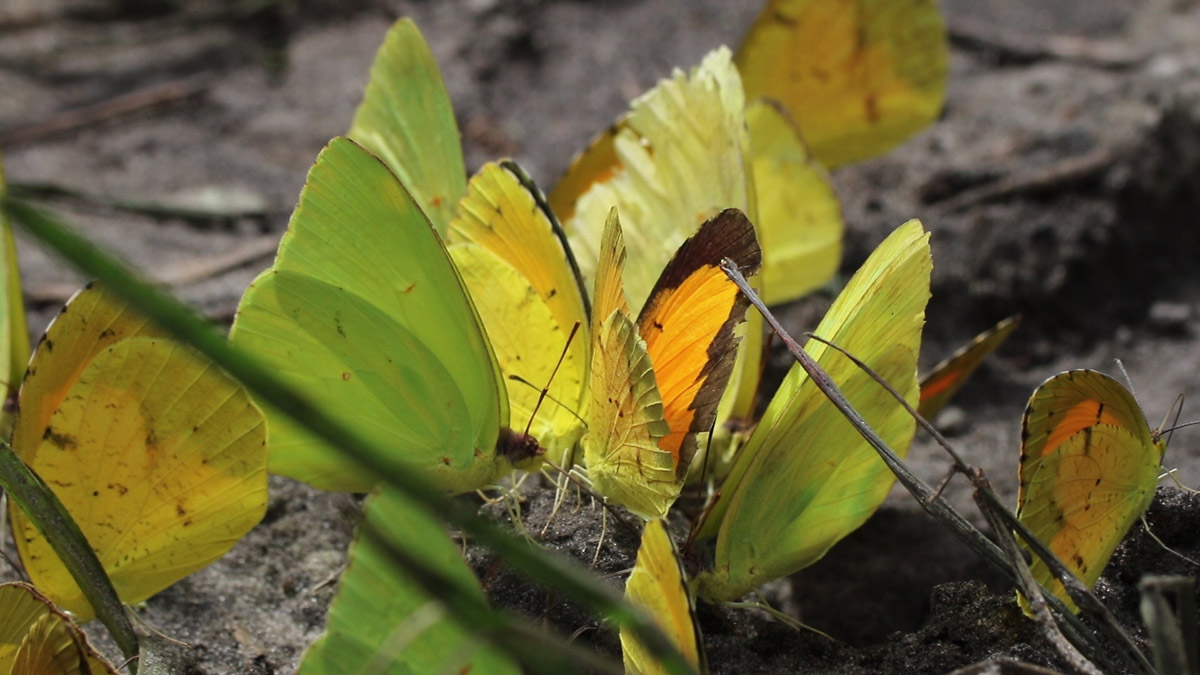
The larger, greenish hued butterflies are cloudless sulphur. Slightly smaller are the sleepy orange (Abaeis nicippe). While the underside of its wing resembles a sulphur or little yellow, in the butterfly at the center, you can see that it’s orange on the top side.
00:07 Gulf fritillary (Agrualis vanillae nigrior), flapping its wings. The previous shot was sped up, but the fast wing flapping we see here is in real time. The smaller butterfly to the left is a pearl crescent (Phyciodes tharos- Corrected 12/1/17, initially identified as phaon crescent- Thanks for the catch, Jeff Ward!). The still image above is from a different gulf fritillary from another part of the video- it just made a better still image to identify the species. And we’ll see the phaon crescent in a second.
00:10 A closeup of several cloudless sulfurs (Phoebis sennae).
00:13 A closer look at the pearl crescent.
00:16 A zebra longwing (Heliconius charithonia tuckeri) nectaring on early whitetop fleabane (Erigeron vernus) along Lake Munson. Also known as the zebra heliconian, this is Florida’s state butterfly. It was the most abundant butterfly of the day, with 365 seen- more than double the previous record for the species.
Tom Brown Park | A Diversity of Butterfly Habitats
Eric Shaw led the East Side Team. “This is a pretty diverse area for the count,” He says. “We get a lot of numbers here.”
In the couple of hours I tagged along with their team, we saw a few different habitats, with different flowers growing in each.
00:45 White checkered-skipper (Pyrgus albescens). See photo below for a comparison between this and the tropical checkered-skipper.
00:55 Yellow flowers with some sort of stinkbugs?
00:57 Barred yellow (Eurema daira) on tufted yellow woodsorrel (Oxalis priceae)
00:59 Gray hairstreak (Styrmon melinus) on grass.
01:01 Dragonfly with tiger striped wings.
01:06 Daisy type flower with red pollinator
01:11 Several zebra longwings flying by vines at the edge of a field. On another shoot, we saw an even larger flock flying the same way by vines. You can scroll down to see the video; in that case, we saw that there was passionvine mixed with the other vines. Passionvine is a larval food (what their caterpillars eat) for zebra longwings.
01:16 Two shots of tropical checkered skippers (Pyrgus oileus). As Mr. Shaw points out, they’re nectaring on little low lying white flowers growing out of red clay.
01:28 A white checkered-skipper sunning on a leaf- Correction 12/1/17- no it’s not! Commenter Jeff Ward caught a minute marking on the forewing of the butterfly below that lets us know that is in fact a female tropical checkered-skipper. Let’s take a look:
The pattern on a white checkered-skipper is almost identical to a female tropical checkered-skipper. What Jeff noticed was the patterning on the edge of the forewing. In the image below, note the alternating white and dark pattern next to the arrow. On a white checkered-skipper, this continues along the entire edge.
Now look at what happens to the edge within the circle. It gets darker with smaller fuzzy white spots. It’s a subtle difference, and one that might be difficult to spot in the field. Sharp eye, Jeff!
Walking through the park, these little white flowers, known as rough Mexican clover (Richardia scabra), are easy to ignore. But butterflies and bees loved them.
Meanwhile, this more showy flower grabbed my camera’s attention, but is an invasive flower known as glorybower. It may offer nectar to pollinators, but native insects and flowers have formed relationships over long time periods, and when invasives encroach on a habitat, they can disrupt these relationships.
01:45 The southern skippering (Copaeodes minima), on a blade of grass. In the shot before we see this, our counters have walked out of a wooded, tangly area and into a field full of tall grass. In this different habitat, we found this and a couple of other new (for the day) species which we’ll discuss in a later section.
We also saw this lookalike, which I couldn’t fit into the video:
Edit 12/1/17: On a comment you can read below, butterfly enthusiast Jeff Ward identified this as a fiery skipper.
02:13 Gulf Fritillary.
The Munson Sandhills | Apalachicola National Forest
I was doing some camera training in early October, and thought it might be fun to visit the Munson Sandhills. This section of the National Forest is just south of Capital Circle, and is a favorite place of mine when I have some time and a camera. And it worked out well, as on the count day I didn’t leave Tom Brown in time to catch the South Side team here.
Since our visit was over a month after the count, there were more wildflowers in bloom.
02:24 Bee flies onto pink flower- slender false foxglove (Agalanis tenuifolia)?
02:26 Little metalmark (Calephelis virginiensis) nectaring on some sort of aster (rice button?).
02:30 Beetle on orange coneflower?
02:32 Common buckeye (Junonia coenia) on a vine. They counted sixteen buckeyes this year, down from 127 last year. As their newsletter notes, the numbers for this species typically fluctuate from year to year.
02:34 Little yellow (Pyrisitia lisa) on yellow flower- possibly sensitive partridge pea (Chamaecrista nictitans). The combined teams saw 102 little yellows, a record for the count.
Lake Munson
The South Side Team didn’t have a lot to see here as the sky became overcast. Butterflies are cold blooded, and like to fly in direct sunlight.
02:49 Red-spotted purple (Limenitis arthemis astyanax), shot at Tall Timbers. This was a species that, based on previous counts, Dave McElveen was expecting to find at Lake Munson. As he explained, this is a species that feeds on tree sap, and not nectar.
02:58 Zebra longwing on an aster (?) kind of flower.
Elinor Klapp-Phipps Park
Like I say in the video, I didn’t visit this team. That’s because we shot a segment here with Dean and Sally Jue in 2015. The butterfly we see at 03:08 is a golden banded skipper (Autochton cellus), a species that’s rare in our area. Klapp-Phipps Park is a golden banded skipper preserve, and they’re plentiful there.
Back at Tom Brown- The Dorantes Longtail Skipper
The surprise of this year’s butterfly count was the number of Dorantes longtail skippers (Urbanus dorantes) found. The East Side Team found 8, and the North Side Team led by Sally Jue found 28.
This is a rare visitor from south Florida. As Dean explains, “Two years ago, we had one in Phipps Park. And evidently it bred, because we’ve seen them here (at Lake Munson), we’ve seen them at the Grove, now we see them at Tom Brown Park. So they’ve established a population.”
We’ve had two mild winters in a row, so he thinks that when we have our next hard freeze, they’ll flee south.
03:43 Dorantes long tail skipper. The combined teams counted 38 this year after first spotting the species last year (a total of one).
04:08 Long-tail skipper (Urbanus proteus), which looks very similar to the Dorantes. The long-tailed has an unmistakable blue fuzzy back. The photo below is from my garden, which made a better still to illustrate the blueness of its back.
They counted a rexord 160 long-tail skippers this year.
Long-tail skippers are a mainstay of my backyard garden. They love to nectar on various flowers in the garden. But the biggest reason they’re there, I think, is that I let their caterpillars munch on my bean plants. Many of the ones I see in my yard were probably born there.
My Backyard Garden
We have a full segment on butterfly gardening. But I thought it was appropriate, when looking at all the butterfly habitats in Tallahassee, to acknowledge that a lot of us are creating habitats in our homes and schools. Here are the butterflies and caterpillars we see in this section of the video:
04:13 Long-tail skipper caterpillar. In the summer, you’ll see frayed edges on your bean plant leaves. And some of the leaves will be curled at the edges as well. If you uncurl one, you’ll find this caterpillar, known as a bean roller. They stay in their little rolls during the day, and come out to feed at night.
04:18 Giant swallowtail caterpillar (Papilio cresphontes), eating a leaf on a Meyer lemon tree. I love these caterpillars. They look like bird poop while on the leaf, but their pattern camouflages perfectly on the lichen covered bark of my tree.
Unlike in other years, our giant swallowtails left the tree to make their chrysalides. I found this one’s chrysalis when I found it walking on the ground. It either hatched with a damaged wing or lost its grip of the chrysalis and fell, damaging it then.
04:22 Eastern black swallowtail (Papilio polyxenes asterius, also known as merely the black swallowtail) caterpillar eating the flowers of a fennel plant. I brought a few of these caterpillars into the house in our butterfly enclosure. They stay in their chrysalides for an unpredictable length of time, but after a couple of months, we’ve finally released two of them over the last couple of weeks.
Here’s one after it hatched:
04:25 Monarch (Danaus plexippus) nectaring on white swamp milkweed (Asclepias perennis).
04:32 Monarch caterpillars eating tropical milkweed (Asclepias curassavica). We’ve raised several dozen of these over the last couple of years, and watching their life cycle never gets old. You can watch it here, in this video I made last year.
04:37 Monarch caterpillar making chrysalis. If you want to see the transformation in full, click that link above.
04:40 Monarch butterfly release.
Closing Montage
04:48 A mix of sleepy orange and little yellow at Tall Timbers.
Foraging for Muscadine Grapes at the Miccosukee Greenway
Editing the butterfly count segment, I was reminded of this segment I produced with WFSU-FM reporter Kate Payne. Walking through the Miccosukee Greenway, we found an abundance of muscadine grape vines growing, and ripe grapes ready to pick. I had no idea there were so many muscadine grapevines in the park, or in Tallahassee.
In one spot in the greenway, we saw several dozen zebra longwings. Vines completely covered shrubs over a large area by the trail. Scanning this viney expanse, I could see a few passionflowers. Passionvine is a larval food for zebra longwing and gulf fritillary butterflies.
Vines are easy to ignore, but they have food for us, and for butterflies. When Kate noticed a vine in her backyard, it triggered her curiosity and she found a new world of plant life around her. It’s a similar experience to my noticing butterflies in the yard or Tom Brown Park. I’ve been visiting the park and the greenway for well over a decade now, walking dogs and taking kids on hikes. I see these places a lot differently now than I used to, and I know that there’s a lot more that I can learn, which is part of the fun of the outdoors.

